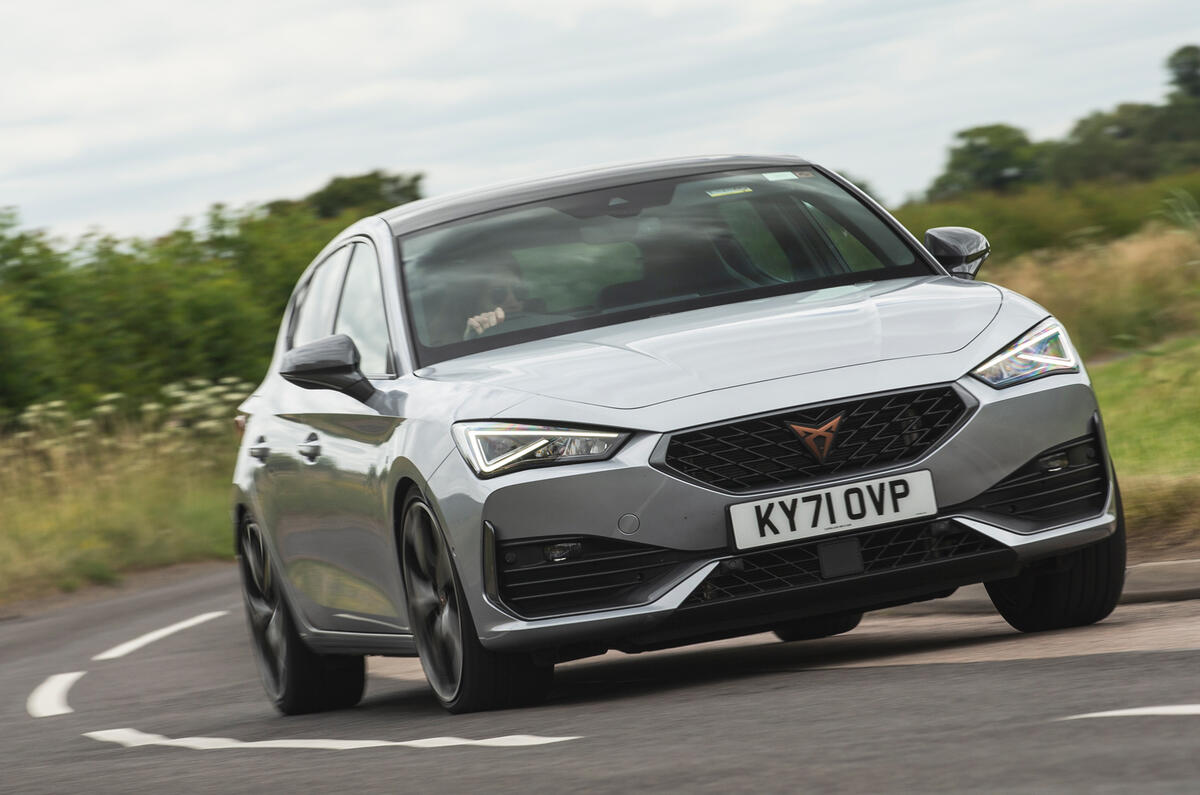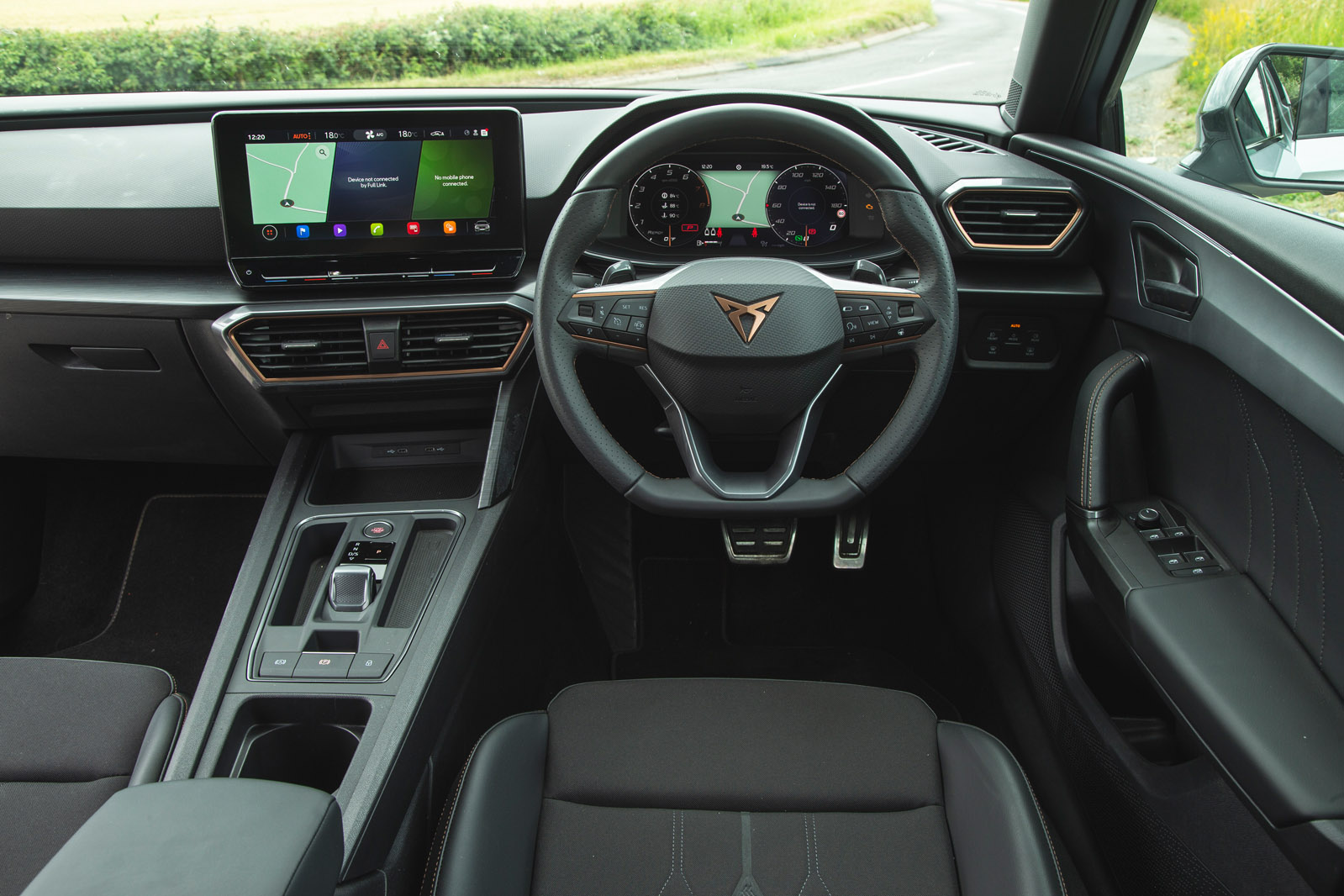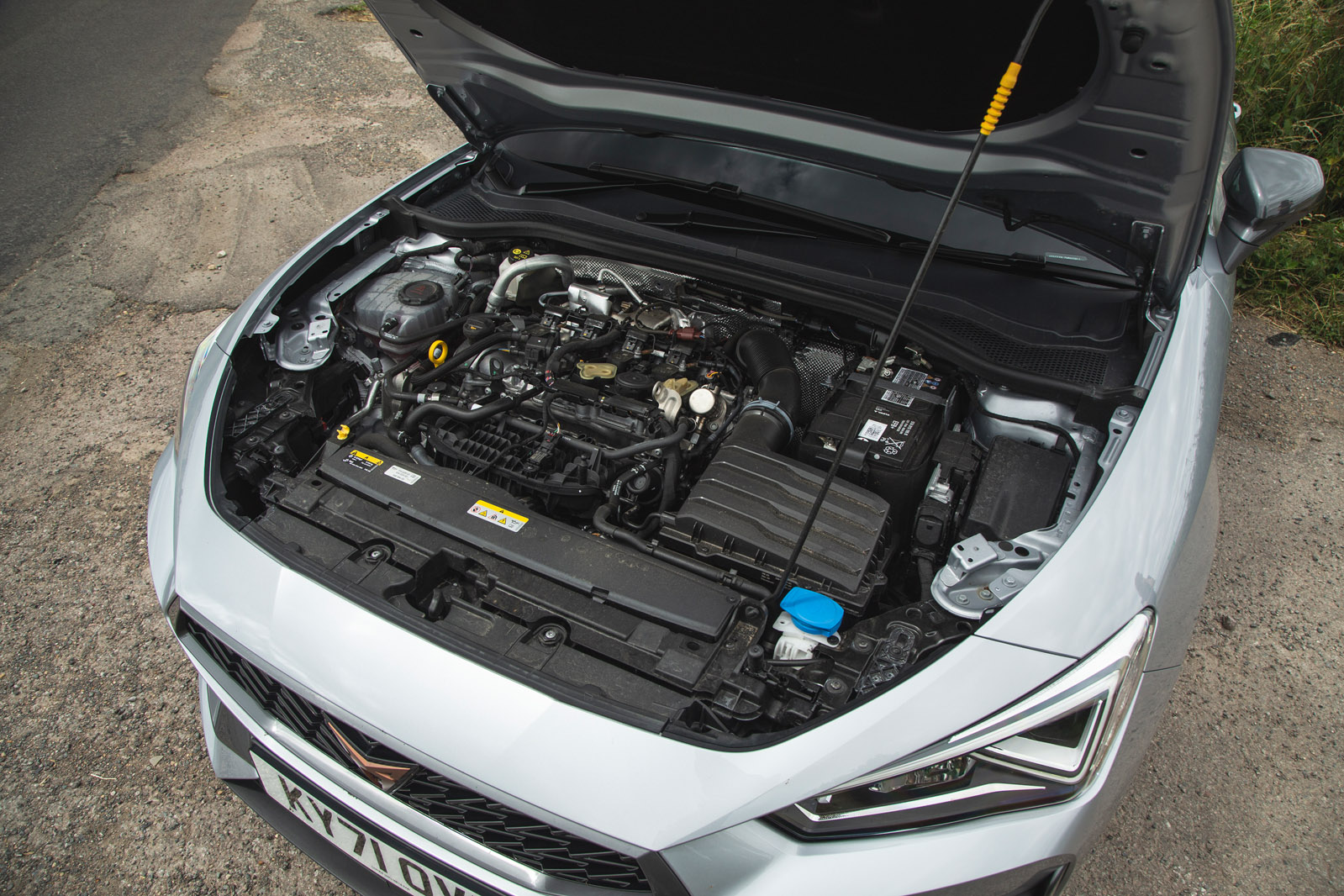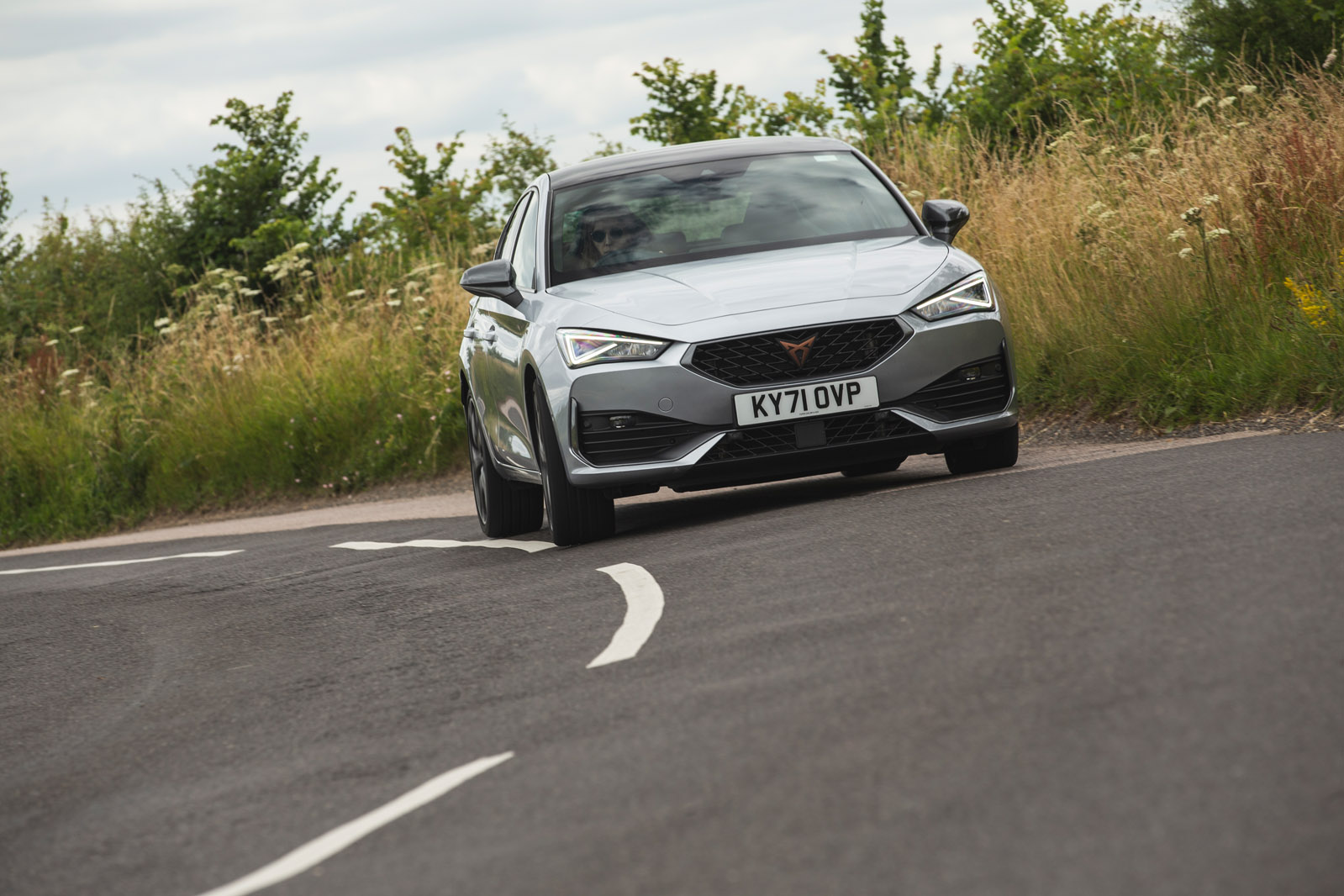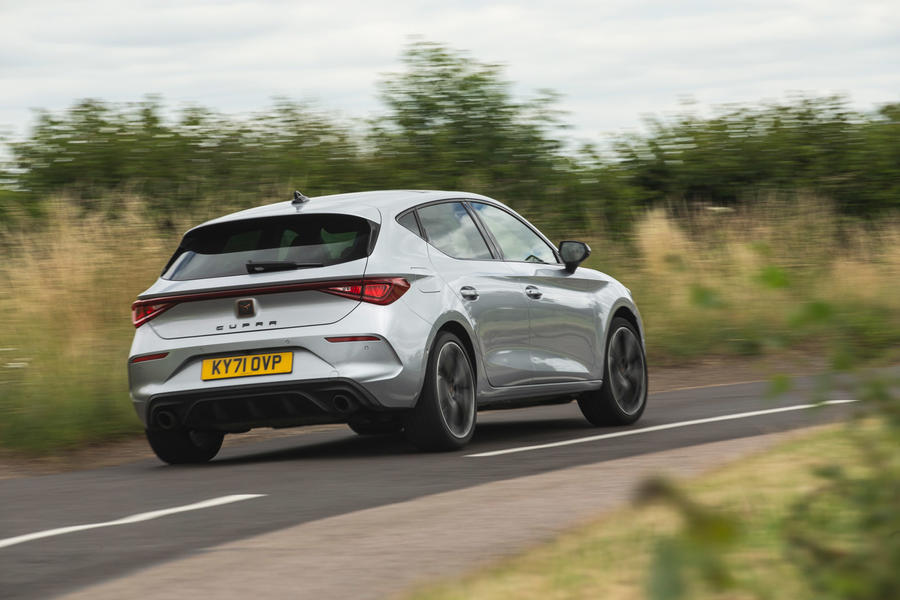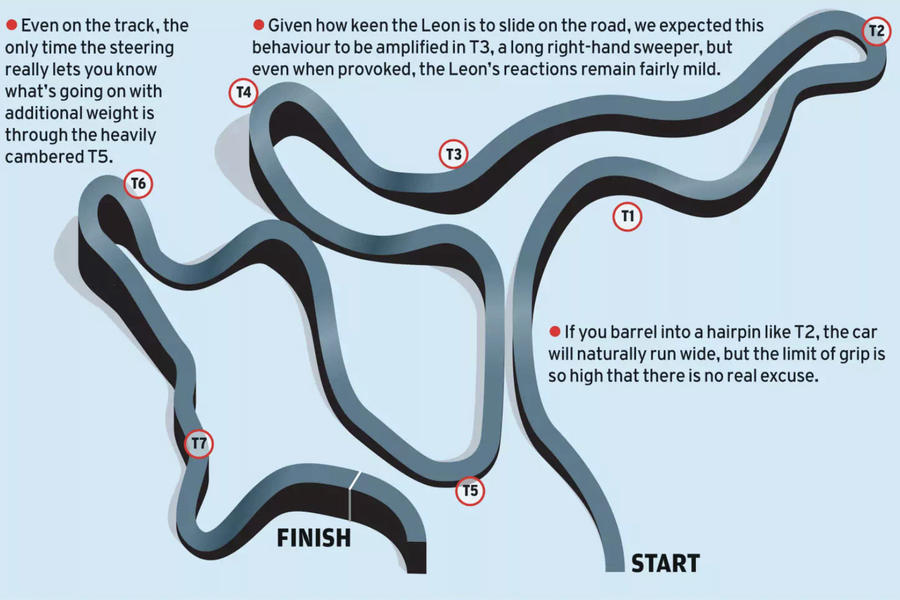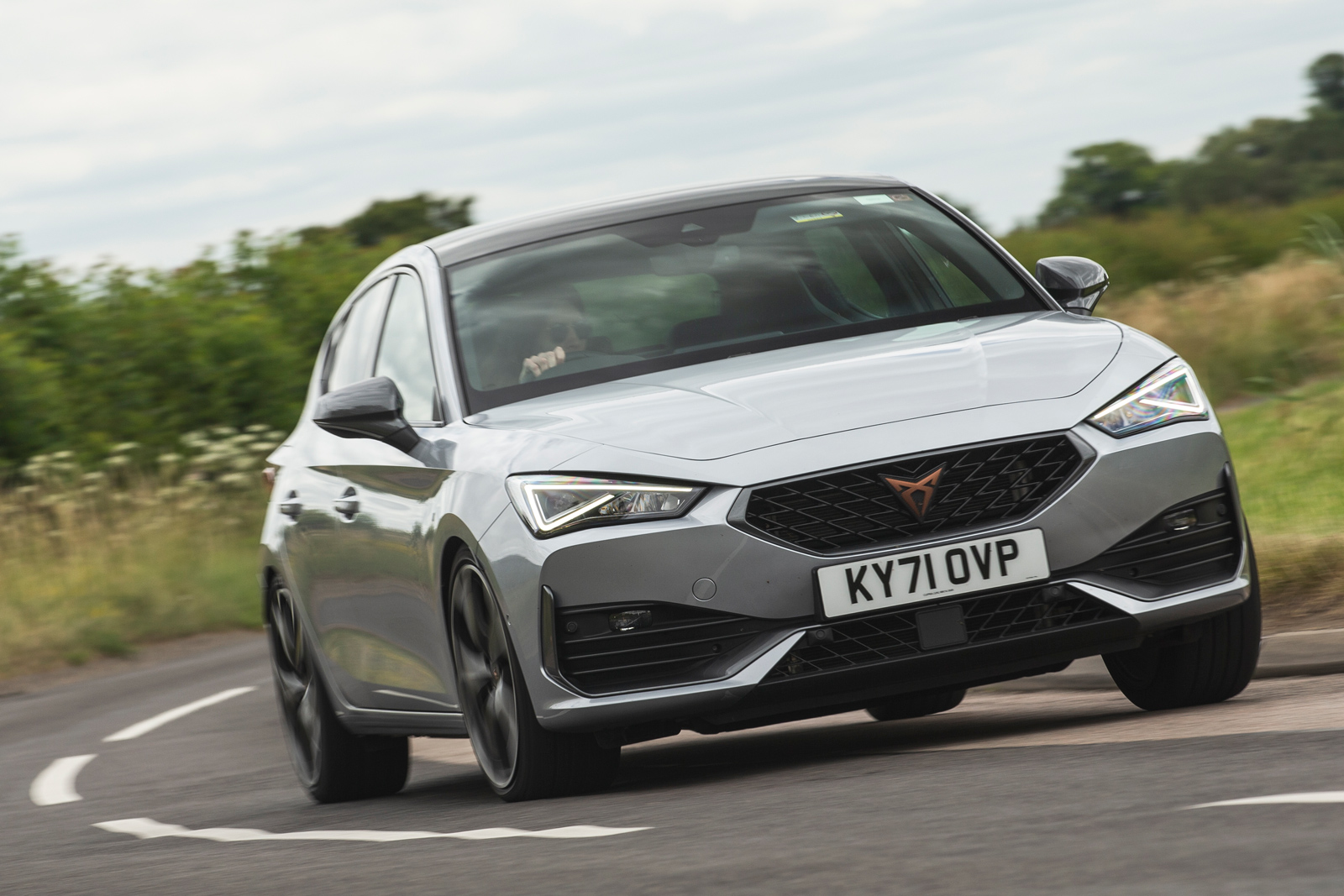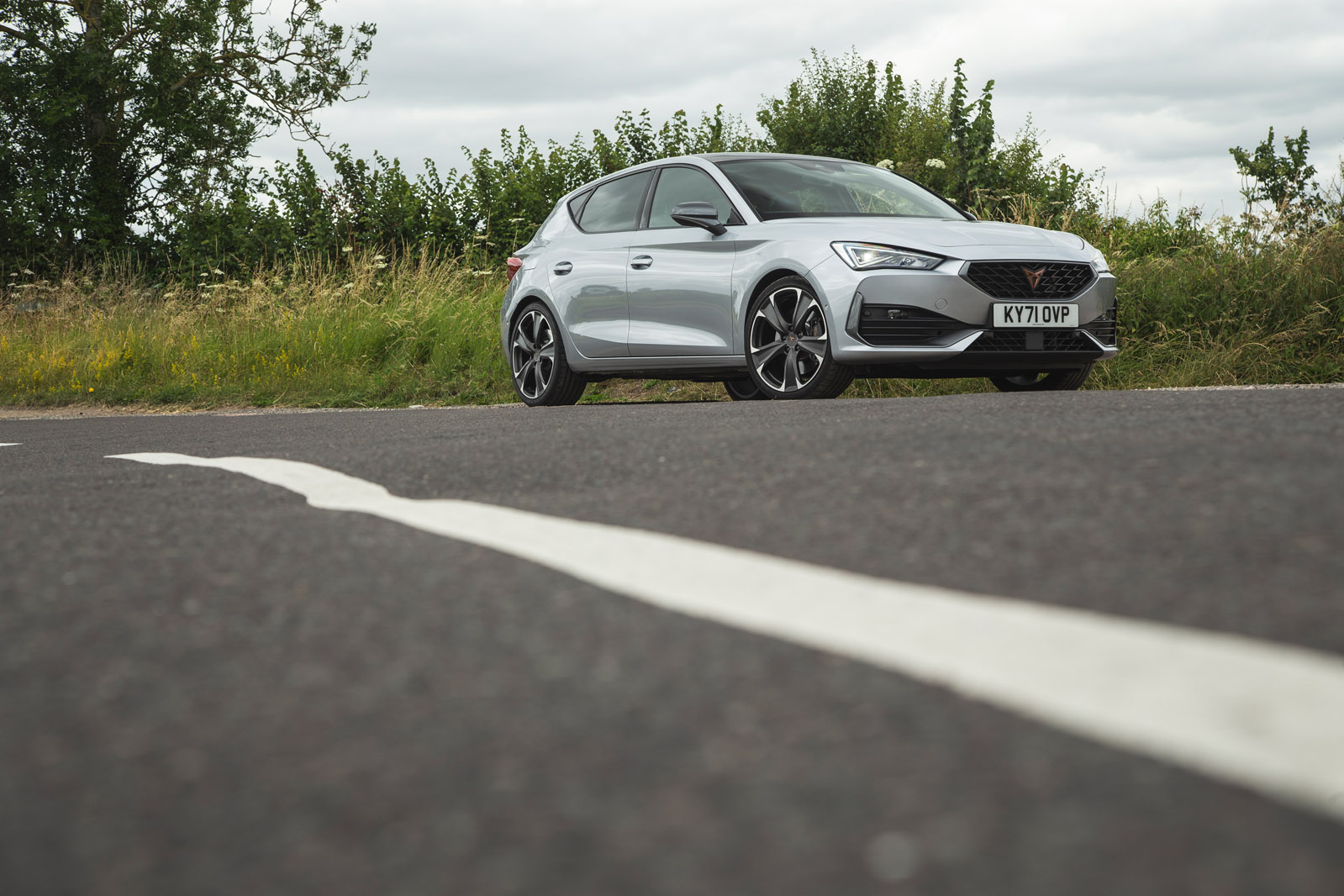Apart from the badge and the sportier seats, you might not even notice you’re in the sporty one, because it’s mostly standard Seat Leon inside the Cupra Leon. In most respects, that’s not a bad thing.
So long as you stay away from the plug-in hybrids, whose battery packs rob an annoyingly large amount of boot volume, the Leon is a particularly roomy hatchback, offering 380 litres of boot space, and almost as much rear leg and head room as the most spacious rivals. The boot is a slightly awkward shape, though, and could really do with a variable floor.
In the front of the Cupra are two sports seats with just enough lateral support to keep you in place during hard cornering, but whose bolsters aren’t too extreme for daily use. In lower-spec VZ1 and VZ2 Leons like our test car, they are adjusted manually and lack the pull-out thigh support and cushion angle adjustment of more expensive versions, but lumbar support is standard.
Even the lower-spec models keep up a reasonably convincing air of luxury. The materials are generally a cut above those in a Volkswagen Golf and the imitation leather on the seat bolsters does a decent enough impression of the real stuff.
Special mention needs to be made of the steering wheel, which is almost round and avoids the thick rim so pervasive in modern performance cars. Instead, it’s thin and firm, upholstered in pleasingly smooth leather and with a flat edge at the front that your thumbs naturally find. We wouldn’t be surprised if one or two of Cupra’s interior designers have 1980s Porsches in their private garages. And the spokes house real buttons, rather than touch panels.
Sadly, the Cupra Leon’s interior hasn’t entirely eluded the VW Group’s corporate penny-pinching department. In the faster versions, the button to turn off the stability control takes pride of place in the centre console, a neat statement of intent. In this more affordable version, the centre console button remains, but it now starts the engine, while the driving mode and stability control are run through the screen.
To change the heating and ventilation, you will also need the screen and the unlit touch bar, as is typical for recent VW Group products. Familiarity with the menu layouts helps, but it’s all still suboptimal.
Multimedia
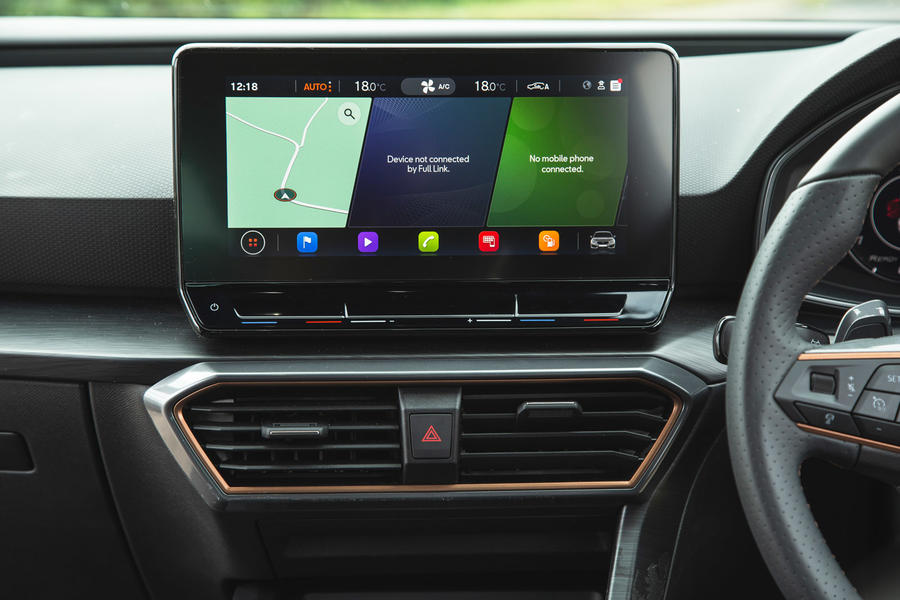
We’ve experienced Seat’s and Cupra’s infotainment many times before (including in the Cupra Born we road tested a few weeks back). Familiarity helps, no doubt, but it still isn’t a great experience.
In this car, we encountered no bugs and the screen responded reasonably promptly. The steering-wheel buttons are physical items, too, so that’s a couple of annoyances avoided. Apple CarPlay and Android Auto work wirelessly, though a wireless charger is fitted on only the VZ3 trim level.
Still, switching between smartphone mirroring and the built-in nav is clunky, some settings are hidden deep in a sub-menu and changing the volume using the touch bar is an exercise in frustration even if you’re the passenger.
You’ll need the screen to tweak the climate control too, and those menus are a maze in themselves. Voice control is never an adequate substitute for buttons, but even so, the Cupra system could be cleverer.


